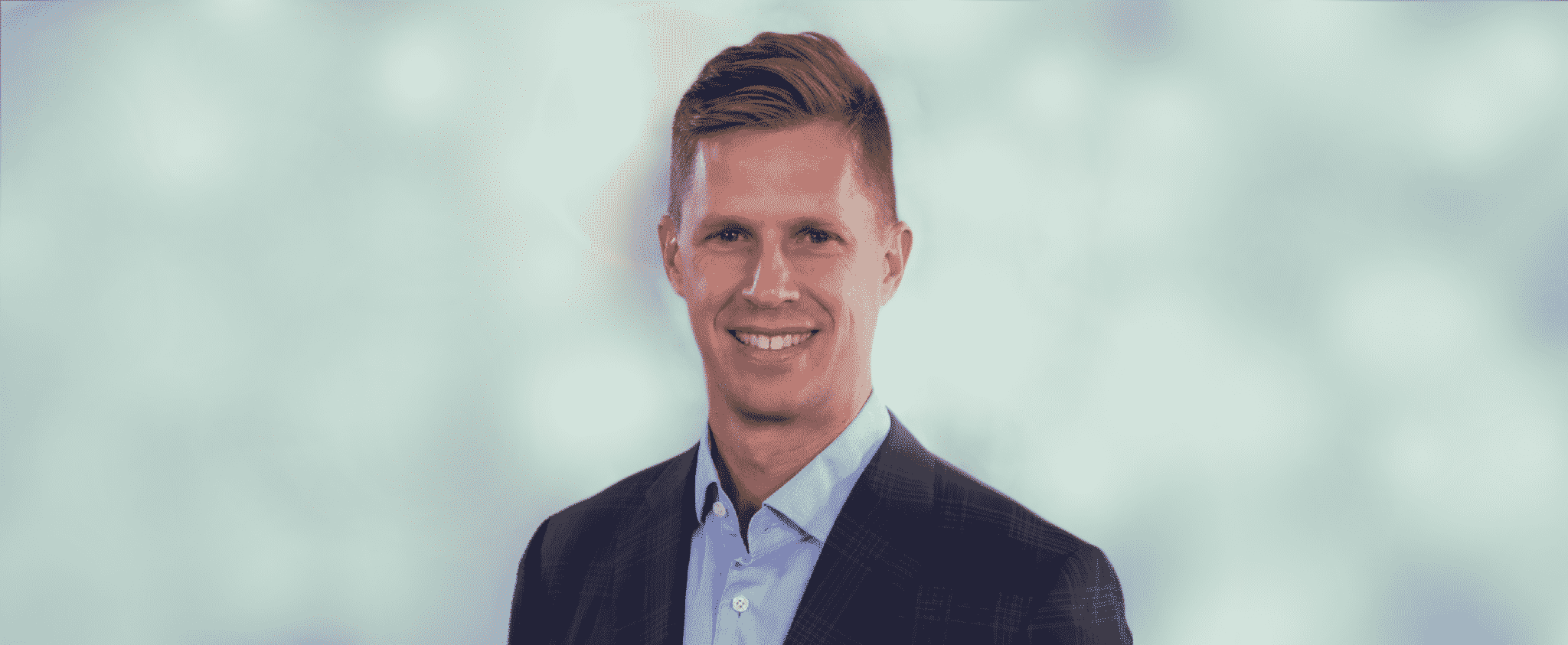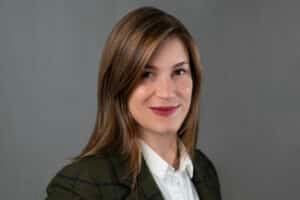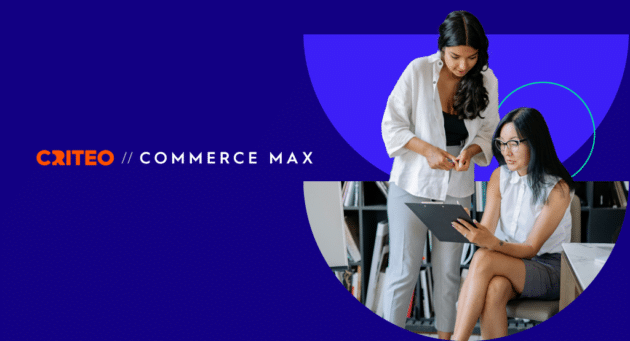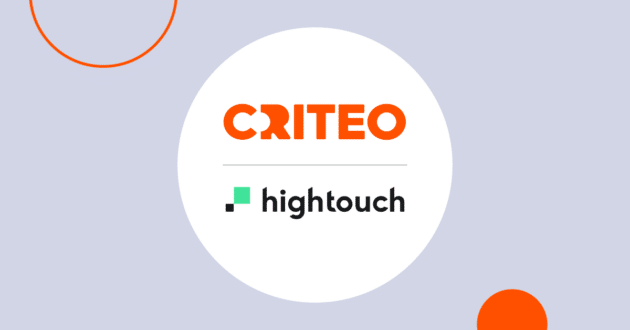At this point, Brendan McCarthy is used to meeting with all of his colleagues virtually, but he recognizes this situation is a far cry from normal. Brendan joined Criteo at the end of 2020 as Chief Marketing Officer to lead our Marketing and Global Communications teams, and so far, he’s experienced Criteo culture almost entirely through the window of his laptop. He (along with the rest of us) can’t wait until we’re able to safely gather in person.
Brendan joined Criteo at a crucial moment of transformation and will help shape our story and share it with the market. And he’s no stranger to transformation. Before he joined Criteo, Brendan was Head of Communications and Product Marketing for Nielsen Global Media, where he focused on transforming the company’s reputation from a legacy television ratings provider to a leading-edge data and technology company. Prior to Nielsen, Brendan led high-profile assignments for large corporate and technology clients at global public relations agency, Edelman.
I caught up with Brendan to find out how he was settling into life at Criteo and we got to talking about surfing, leadership styles, the importance of company swag, and more. Here are some of the highlights:
1. What is it like to start a new position 100% remotely?
It’s funny because my Criteo laptop is nearly identical to the one I used at my last company — and in a virtual setup nothing really changes in your home office environment. So, it was surreal to close my laptop after saying goodbye to all my colleagues at Nielsen, then opening up a nearly identical laptop to a whole new group of faces, for a new brand, with new challenges. It helped that my team sent me a package of Criteo swag for my home office because having those tangible representations of our brand around me made this new chapter feel more official.
So many of us in the U.S. have been working remotely since last March and being 100% virtual is starting to feel normal. While we are meeting new people and building relationships digitally, I think it’s important to take a beat and remind ourselves that this isn’t normal and recognize that, frankly, the world is upside down right now. But it’s also a recognition of hope for the future — that we will get to see each other in person, when we can do so safely.
2. What do you love about working in marketing and communications?
There’s a balance of both business challenges and creative challenges in marketing and communications. I like having rigorous conversations with our leadership team on how to best drive business growth, but then also having that creative overlay on everything that my teams and I do. It’s a nice juxtaposition of art and numbers in one role, and I like how it draws on both sides of analytical and creative layers for me.
3. What made you want to join Criteo?
Criteo is at a pivotal moment in its transformation and marketing and communications are so important to help people understand our brand and bring them on this journey with us. Sometimes there’s a gap between what people think we do and what we can do, so my teams are key drivers in closing that gap and helping people see our movement towards future growth. That work is integral to our company’s success, so it’s incredibly exciting for me and reinforces how valued and needed that work is at the most basic level. When you have an opportunity like this, there are many different reasons why you would want to be a part of it. It’s a no brainer.
4. How would you describe your leadership style?
It’s hard to boil down, but I just try to be myself and bring the qualities that I care about to my team. A big part of that is helping them understand the bigger picture of what we’re trying to accomplish — to show that we’re one team, united around one goal. This helps people understand why their work is important and motivates them to care more about what they’re doing. Because when people care about their work, they’re more likely to feel accountable and committed to excellence. This creates a high level of expectation for themselves and the teams around them.
Richard Edelman has a saying that “everyone is an account executive”, which promotes a flat organization, so you don’t get hung up on hierarchies and titles. While there is structure and organization for a reason, it shouldn’t stop you from rolling up your sleeves and showing everybody that you can do the work. It helps build confidence that you are part of a team that is committed to the collective good of how we’re going to move forward together.
I also try to have fun every day and make our work environment as enjoyable as possible, which can be even harder in our current state of working from home. I just try to be myself as much as I can while also being professional, and I want my team to feel comfortable doing the same. There’s been a saying come up in the last couple of years about “bringing your whole self to work” and I try to do that, to the fullest extent possible.
5. Who do you look up to for inspiration or mentorship?
I’ve worked with many inspiring people during my career, and that’s one of the reasons I stayed at many of my past companies. Whether it be their leadership styles or the way they execute to achieve their goals, my mentors have shown me how important it is to work with people who you admire. That’s another reason why I’m thrilled to be at Criteo, since it reunites me with Megan Clarken. Before she joined Criteo as CEO, we worked together at Nielsen, and I really respect her and what she’s trying to achieve. Getting the chance to work with her again is a special opportunity, especially during this critical time for Criteo, and I couldn’t be happier to be part of her team.
6. What’s the best career advice you ever received?
I’ve received a lot of great advice over the years that I’ve turned into a few key mantras for myself. The first is to try to control the things that you can control and don’t dedicate your energy to the things that you can’t control. That can transcend beyond your career and into how you participate in society. For instance, if there’s a macro change you’re trying to make in the world, it’s easy to feel overwhelmed or helpless. But, if you break it down, you can typically find aspects of it that you can take charge of, such as voting, volunteering, taking actions, and building your influence with each action. And you can apply the same process to crisis communications, strategic planning, or any other situation that arises in your career to help you move forward where you can.
I also like to consider all options in front of me. When I have to think creatively to address a situation, I create a spectrum where on one hand I consider the craziest, most impractical way to address it and on the other hand look at the option with the least possible effort. I then add as many options as I can within that spectrum and evaluate all of them until I land on the right path forward.
7. If you weren’t working in the advertising tech world, what would you be doing?
Well, my family would have to be on board with this too, since it’s not just about me, but I would love to live on an island in the Caribbean. If my family and I could make our careers fulfilling by giving surfing lessons, waiting tables, or bartending, it would just be a completely different way of life to experience. And I would of course want to surf as much as possible.
8. I sense a theme here, because you’ve mentioned your favorite ad campaign is Billabong’s “Only a surfer knows the feeling.” What is it about that campaign that resonates with you?
That campaign is from my childhood, so it’s memorable for me, but Billabong did a great job of capturing that unique sensation of what it’s like to go across a wave. There’s nothing like that feeling, and it’s something that’s clear after talking with people who just had their first surfing lesson. They’re ecstatic and they want to do it over and over again. Billabong captured that joy with the perfect storm of great creative and messaging, as well as reach and placements, contests, and sponsorships.
9. What are three books you think everyone should read, and why?
For me, it’s not so much about the books themselves, but rather the types of books I’d recommend.
- Business — For people who roll their eyes at the idea of reading a business book, here’s a little secret: you typically only need to read the first few chapters to understand the most important points, since the rest of the book focuses on case studies based on the initial chapters. (Hat tip: Mitch Barns). But one business book that I did read (in its entirety) and recommend is Harvard Business Review’s book of essays, On Leadership.
- History — It’s important to understand the significance of historical leaders, so reading a biography or historical non-fiction can help show the past’s impact on the present. One book I recommend is former U.S. Secretary of State, Henry Kissinger’s, Diplomacy. It’s very long, so it’s a big ask to read it, but it’s an interesting history of diplomacy and international relations.
- Fiction — Reading fiction — the weirder the better — can help bring yourself out of the business and historical concepts and exercise your imagination. I read a lot of Cormac McCarthy and other fiction writers who just take you out of your mind a little bit and show you something completely different.
Big thanks to Brendan for taking the time to chat! If you’re interested in hearing more from Criteo’s leaders, find out what our CEO, Megan Clarken, learned during her first year on the job.
















